
Klasik eksperimentalnog autobiografskog filma.
Kćeri i očevi, uhh.
A contemporary classic and a landmark in autobiographical filmmaking, SINK OR SWIM is an unflinching account of the highly charged relationship between a daughter and her father. Through a series of twenty-six short stories, a young girl chronicles the childhood events that shaped her ideas about fatherhood, family relations, work and play. As the stories unfold, a dual portrait emerges: that of a father who cared more for his career than for his family, and of a daughter who was deeply affected by his behavior. Working in counterpoint to the forceful text are sensual black and white images that depict both the extraordinary and ordinary events of daily life. This formally complex and emotionally intense film is fraught with tension, ambivalence and love.
Sink Or Swim, Su Friedrich's experimental short in which she attempts to express, through a wide variety of techniques, her ambivalent experiences with and feelings for her often-absent father, has a rigorous formal structure driving its autobiographical narrative. The film consists of 26 sections, each one titled with a single word, the first letters of which count down through the alphabet. The film opens with a segment titled "Zygote" and ends with a section that has three titles, all from Greek mythology: "Athena," "Atalanta," and "Aphrodite." There is one screen capture here from each of the film's 26 alphabetical sections, mimicking the film's structure and demonstrating the discrete feel and methodology of each separate part in the film's whole. The titles sometimes consist of deadpan jokes or puns (the "X Chromosome" section is simply a sustained shot of an elephant's trunk, for obvious reasons), but more often the titles relate obliquely to the images they introduce. There is, in addition to the stories provided by the film's voiceover, a secondary narrative running through the film that is sustained wholly by the titles and their relationships to the images. Friedrich's lesbianism is brought in almost exclusively in this way, particularly in the sections entitled "Temptation" (images of female bodybuilders) and "Kinship" (in which, at one point, an image of a lesbian couple embracing in a shower is slowed down and manipulated with video processing). These subtexts largely go unspoken, so that the film becomes a story about desire developing, placed in opposition to the filmmaker's antagonistic relationship with her father. - seul-le-cinema.blogspot.com/
By Fred Camper
[Rating: ***, which means "A must-see"]
Indeed, much of the richness of this autobiographical film, whose honest engagement with essential human dilemmas proves immensely moving, stems from its refusal to make simple choices or settle into unambiguous positions. One of Friedrich's themes is the interpenetration of the past and the present; we discover that theme as her adult identity gradually emerges from a difficult childhood, but also in the way that the past keeps reasserting its influence, even in adulthood; this is one of many examples of the film's divided, multiple nature.
In fact, the film as a whole doesn't fit into any single category or genre. While it has been described as Friedrich's film about her father, the film involves the rest of her family and her own growing independence as well, and could just as well be called autobiography. Sink or Swim shares aspects of certain feminist films of recent years — the use of home movies in Michelle Citron's Daughter Rite, the collagelike form and concerns with gender identity of many earlier works, such as the films of Yvonne Rainer — yet it also recalls the structural film, whose formal elements are themselves primary concerns. This multiplicity extends down to the films individual sections, and finally to each moment of each section: meaning, emotions, ideas are never fixed or static, but are always being redefined as new material is brought to light, as the filmmaker struggles to come to terms with her past.
The film, shot in grainy black and white, is divided into 26 sections, one for each letter of the alphabet, each introduced by a printed intertitle and presented in reverse alphabetical order. The first section, "Zygote," begins with science-film footage of a human egg, sperm fertilizing the egg, the zygote beginning to divide,

 and
finally an embryo. As the zygote begins to divide, the voice of the young
girl begins to tell the story of Athena,
who, unique among Zeus's daughters, sprang full-grown from his brow. The
ironic disparity between the facts of human reproduction as seen in the
imagery and the myth of asexual reproduction heard on the sound track introduces
one of the film's central conflicts, the struggle of a child to create
her own self, in the face of the "facts" of the world that her parents
provide her. This myth and others and stories from Friedrich's own life
are told on the sound track in the third person by the narrator. We soon
find out that when she was very young Friedrich's father gave her
a book of Greek mythology and that she has at least since then been fascinated
by stories.
and
finally an embryo. As the zygote begins to divide, the voice of the young
girl begins to tell the story of Athena,
who, unique among Zeus's daughters, sprang full-grown from his brow. The
ironic disparity between the facts of human reproduction as seen in the
imagery and the myth of asexual reproduction heard on the sound track introduces
one of the film's central conflicts, the struggle of a child to create
her own self, in the face of the "facts" of the world that her parents
provide her. This myth and others and stories from Friedrich's own life
are told on the sound track in the third person by the narrator. We soon
find out that when she was very young Friedrich's father gave her
a book of Greek mythology and that she has at least since then been fascinated
by stories.
Gradually, in fits and starts, section by section and with many backward glances, the protagonist's identity emerges. "Zygote" is
 followed
by "Y Chromosome," with images of a flowerlike milkweed, and "X Chromosome,"
with amusingly phallic images of an elephant's foot and trunk. Friedrich's
humor, an important leavening for material so personal and traumatic, is
based on a mixture of directness and creative juxtaposition. Thus the sections
named for the male and female chromosomes are illustrated by standard symbols
of the two genders, but they are reversed — Y being the male chromosome.
followed
by "Y Chromosome," with images of a flowerlike milkweed, and "X Chromosome,"
with amusingly phallic images of an elephant's foot and trunk. Friedrich's
humor, an important leavening for material so personal and traumatic, is
based on a mixture of directness and creative juxtaposition. Thus the sections
named for the male and female chromosomes are illustrated by standard symbols
of the two genders, but they are reversed — Y being the male chromosome.
Later in the film, an animated sequence begins with a white page reading across the top "The American Kinship System"; a
 family
tree, beginning with "Husband," "Wife," and several children ("Girl," etc.),
begins to form. But Friedrich's parents divorced when she was 11, and her
father remarried twice, so on the same chart, "Wife #2," "Wife #3," and
more children appear. While standard genealogical charts often show multiple
marriages, Friedrich's progressive presentation of her own family history
makes it seen humorously absurd.
family
tree, beginning with "Husband," "Wife," and several children ("Girl," etc.),
begins to form. But Friedrich's parents divorced when she was 11, and her
father remarried twice, so on the same chart, "Wife #2," "Wife #3," and
more children appear. While standard genealogical charts often show multiple
marriages, Friedrich's progressive presentation of her own family history
makes it seen humorously absurd.
Quite early in the film, in a section titled "Virginity," the first hints of Friedrich's independent self emerge, as we learn of her preadolescent fantasies about harems and mermaids. Soon after, the title "Temptation" is followed by images of women
 bodybuilders.
It is important, I think, that neither here nor later in the film does
Friedrich connect erotic references to women in any direct way with her
family past: no cause and effect of the sort that pop psychologists might
infer is ever suggested. Such direct linkages would suggest a more simply
determined self than Friedrich claims.
bodybuilders.
It is important, I think, that neither here nor later in the film does
Friedrich connect erotic references to women in any direct way with her
family past: no cause and effect of the sort that pop psychologists might
infer is ever suggested. Such direct linkages would suggest a more simply
determined self than Friedrich claims.
Indeed, none of the film's connections ever point in a single direction. A story of her father forcing her to watch a scary movie is followed by an account of how her father, having taught her to play chess, refused to play with her after she beat him for the first time. The connection
 between these two stories is surely an indictment of her father, but then
we hear a story of a trauma in his own childhood and we come to understand
that here, as always, issues of blame and guilt are never simple.
between these two stories is surely an indictment of her father, but then
we hear a story of a trauma in his own childhood and we come to understand
that here, as always, issues of blame and guilt are never simple.
Similar ambiguities characterize the relationships between all the elements of this film, but most striking, perhaps, are the relationships between the two language-oriented elements — the section titles and the girl's narration — and the imagery. Sometimes the connections are direct, often to humorous ends ("Zygote") but more often to make the personal nature of the film clear. The first little girl we see is Friedrich's sister, being held in the air by her father. The viewer understands her as a surrogate for Friedrich herself. When the narrator describes the father's own childhood trauma,
 involving the
accidental death of his sister, we see home-movie footage of the father
as a child with his brother
involving the
accidental death of his sister, we see home-movie footage of the father
as a child with his brother  and sister.
A story about her mother's suicide
threat is accompanied by footage of a hospital room — the place where unsuccessful
suicides usually wind up. Often, however, a kind of displacement operates.
Stories of Friedrich's childhood swimming experiences are accompanied by
recent footage of children swimming;
and sister.
A story about her mother's suicide
threat is accompanied by footage of a hospital room — the place where unsuccessful
suicides usually wind up. Often, however, a kind of displacement operates.
Stories of Friedrich's childhood swimming experiences are accompanied by
recent footage of children swimming;
Friedrich has remarked that it was only when she began writing about herself in the third person that it became possible to tell her stories at all. Perhaps the intensity of the material required that degree of distance; at any rate, the "she" suggests that we are watching the story of a person not yet fully formed, not yet ready to assert herself as an "I" in the world. The awkwardness of the narrator's voice — a young girl reading often complex texts — is an appropriate additional kind of displacement. However, the girl's voice varies so frequently in its degree of emotional inflection that its effect is a little jarring.
The film's variety of connections results in a collage of extraordinary richness, a portrait of a persona that is somewhat less than unified. As the adult woman struggles to emerge from the skein of family influences, she begins to take actions to assert her own autonomy. On a narrative level, this process climaxes when she decides not to swim across a lake that her father had often swum (he had also tried to scare her from swimming in it when she was a child). But on a cinematic level,

 the climax comes
earlier, in a powerful section titled "Kinship." From the point of view
of a traveler, presumably Friedrich, we look through the window of a plane
as it takes off. Then there are images of Death Valley, as our protagonist
walks about accompanied by a friend. Intercut periodically are images of
nude women in a shower and sauna; at one point two women embrace. The little
girl whose father had both introduced her to and made her scared of the
world now has a physicality — an ability to move through space — and a
sexuality of her own.
the climax comes
earlier, in a powerful section titled "Kinship." From the point of view
of a traveler, presumably Friedrich, we look through the window of a plane
as it takes off. Then there are images of Death Valley, as our protagonist
walks about accompanied by a friend. Intercut periodically are images of
nude women in a shower and sauna; at one point two women embrace. The little
girl whose father had both introduced her to and made her scared of the
world now has a physicality — an ability to move through space — and a
sexuality of her own.
But since one of Friedrich's themes is the continual interdependence of past and present, her film cannot end here. In fact, the sequence just described is accompanied by a discordant and unexplained
 element — a German
art song on the sound track. A few sections later, in "Ghosts," a typewriter
is seen in negative typing out a letter from Friedrich to her father. On
the sound track, instead of the young narrator's voice, we hear the typewriter
keys, giving the section a harshness, even a confrontational directness,
that most of the other sections lack. In the letter, she describes her
mother's loneliness after her father left the family. Mother would rush
the children to bed each evening, and then listen, alone, to an album of
Schubert lieder. Her favorite song was also young Su's favorite, "Gretchen
at the Spinning Wheel" — the song we heard earlier. Friedrich explains
in her letter that she only recently learned the translation of the lyrics,
which describe a woman who years for her absent lover and feels she can't
live without him.
element — a German
art song on the sound track. A few sections later, in "Ghosts," a typewriter
is seen in negative typing out a letter from Friedrich to her father. On
the sound track, instead of the young narrator's voice, we hear the typewriter
keys, giving the section a harshness, even a confrontational directness,
that most of the other sections lack. In the letter, she describes her
mother's loneliness after her father left the family. Mother would rush
the children to bed each evening, and then listen, alone, to an album of
Schubert lieder. Her favorite song was also young Su's favorite, "Gretchen
at the Spinning Wheel" — the song we heard earlier. Friedrich explains
in her letter that she only recently learned the translation of the lyrics,
which describe a woman who years for her absent lover and feels she can't
live without him.
Now — and particularly on a second viewing — we are able to understand "Kinship" in a new way. The adult Friedrich has defined herself in part in opposition to the song, as represented by her postdivorce mother: not at home alone, but seeing the world; not heterosexual, but lesbian. And yet, as is so often true of Friedrich's connections, the two elements (song and image) that relate as opposites also relate as identities, for the sexual footage is intercut with the travel footage, representing a different time and place: our adult traveler is at the moment, or so it would appear, also without a lover.
More complete explanations of things seen earlier are offered more than once in the film. This pattern is a beautiful way of expressing the dependence of the present on the past: however much one may think one is living in the present, however ordinary one's present moment may seem, the past will always return to assert its grip. Nonetheless, the adult Friedrich continues to struggle to emerge. We see her as an adult for the first time when the narrator describes the adult Friedrich (now "the woman") observing her father treat his young daughter, her stepsister, in the same kind of sternly inconsiderate way that she remembers so well from her own childhood. As the narrator describes how the woman watched this scene with horror, while
 sipping lemonade, we see the adult Friedrich, alone in her bathtub, perhaps
a bit depressed, drinking beer from a bottle. But witnessing the father-daughter
scene as an adult may have been also liberating: the sequence ends with
the adult Friedrich typing out the story on her typewriter, now seen in
positive rather than the negative of the earlier typewriter sequence. She
has thus finally emerged, from all the displacements of black-and-white
negative, third-person narration, and home movies, as the film's independent
center.
sipping lemonade, we see the adult Friedrich, alone in her bathtub, perhaps
a bit depressed, drinking beer from a bottle. But witnessing the father-daughter
scene as an adult may have been also liberating: the sequence ends with
the adult Friedrich typing out the story on her typewriter, now seen in
positive rather than the negative of the earlier typewriter sequence. She
has thus finally emerged, from all the displacements of black-and-white
negative, third-person narration, and home movies, as the film's independent
center.
Such moments of clarity and independence do not obviate the continual return of Friedrich's principal persona — a being hopelessly divided, irreparably torn between present and past, between fantasy and reality, between a remembered family past and an adult present, forged outside of the family unit. But such divisions and contradictions should not be seen in a wholly negative light. What Friedrich cannot be — a person who regards her consciousness as unified and integrated, and who organizes the world around that consciousness — is mirrored in what the film's style generally avoids. Its gritty, nonglossy black and white mimics the look of the home movies that are so prominent in its imagery. Unlike the static, formal compositions in more conventional movies, Friedrich's hand-held camera responds to her bodily movements and attitudes of the moment.
In the films of Stan Brakhage, a similar use of small movements filmed by a hand-held camera produces a musical rhythm that ultimately imposes the sense that a single personality, even a single body, is organizing the world. In contrast to Brakhage's vision of the transcendent self, Friedrich as well as other younger filmmakers have posited a self that is contingent, malleable, internally divided, and very much a product of its environment. In the work of an earlier generation of personal filmmakers the "self" is taken as a given, springing full-grown like Athena from Zeus's brow; Friedrich's self is constantly in the process of being formed and reformed, from the moment the sperm enters the egg, through all her experiences with her parents, through all the choices she makes — and Sink or Swim lays that process of formation bare, surrounding the protagonist with the images and sounds that influence it.
 A humorous moment late in the film speaks directly to Friedrich's
conception. The narrator says that after the father left the family,
they were able to buy a television, something he had always forbidden,
and we see images from Father Knows Best.
In one shot, we see the faces of three scrubbed and smiling kids, all in
a line, object-like as only American mass culture can make them. Friedrich
is making fun of this concept of the happy nuclear family, and the artificial
media image gives Friedrich's personal stories a social dimension as well.
But there is another, deeper joke at work. The compositional perfection
of this image, and the way the children's faces are reduced to objects,
is utterly contrary to the style of Friedrich's film. It contradicts the
style of the home movies she uses, with their jerky images of active children,
but it contradicts the overall space of the film as well.
A humorous moment late in the film speaks directly to Friedrich's
conception. The narrator says that after the father left the family,
they were able to buy a television, something he had always forbidden,
and we see images from Father Knows Best.
In one shot, we see the faces of three scrubbed and smiling kids, all in
a line, object-like as only American mass culture can make them. Friedrich
is making fun of this concept of the happy nuclear family, and the artificial
media image gives Friedrich's personal stories a social dimension as well.
But there is another, deeper joke at work. The compositional perfection
of this image, and the way the children's faces are reduced to objects,
is utterly contrary to the style of Friedrich's film. It contradicts the
style of the home movies she uses, with their jerky images of active children,
but it contradicts the overall space of the film as well.
 In a section titled "Quicksand" the narrator recounts a story about
Friedrich's father forcing her to watch a scary movie. The imagery connects
allusively, rather than directly, to the title and to the story told on
the sound track. We see footage taken from a roller coaster in relatively
short takes and edited with a jagged, unpredictable rhythm; shots rarely
feel as if they are brought to completion. This style combines with the
sweeping movements of the roller coaster to create the feeling of a space
that is continually dividing and breaking apart in ways that cannot be
anticipated — one sees a vision of the world fraught with peril, unexpected
voids, quicksand.
In a section titled "Quicksand" the narrator recounts a story about
Friedrich's father forcing her to watch a scary movie. The imagery connects
allusively, rather than directly, to the title and to the story told on
the sound track. We see footage taken from a roller coaster in relatively
short takes and edited with a jagged, unpredictable rhythm; shots rarely
feel as if they are brought to completion. This style combines with the
sweeping movements of the roller coaster to create the feeling of a space
that is continually dividing and breaking apart in ways that cannot be
anticipated — one sees a vision of the world fraught with peril, unexpected
voids, quicksand.
This vision, of space and of the self, lies at the heart of Sink or Swim. The surprising and playful stylistic shifts, between home movies, newly photographed footage, and rephotographed older footage (the nude women in "Kinship" are from Friedrich's first film); the disparities and displacements between image and text; the disruption when the text directly names what is seen in the image — all these suggest nothing less than the flailings of a beginning swimmer trying to come to terms with inner and outer chaos. The difference is that through her imaginative control of her medium, Friedrich has raised those flailings to the level of art, and in so doing has expressed both their regressive terror and their forward progress.
In the film's final image she manages not only to combine the diversity
 of her themes in a single cinematic moment, but to go beyond them as well,
with an aching expression of haunting power. The film's reverse alphabet
has just concluded, and we see a shot of Friedrich as a girl, posing for
the camera in a manner rare in the film and vaguely reminiscent of the
shot of the three children from Father
Knows Best. She stands in a bathing suit with an oddly frilly skirt
as an adult voice — Friedrich's own, in fact — begins to sing the ABCs.
Shortly after she begins, the song begins again, her voice superimposed
over itself, in the manner of a round. At the same time the image is superimposed
over itself, paralleling the music, until suddenly all the aural and visual
superimpositions drop out. The child is then seen alone again, in freeze-frame,
while her single voice sings the last line of the song, "Tell me what you
think of me."
of her themes in a single cinematic moment, but to go beyond them as well,
with an aching expression of haunting power. The film's reverse alphabet
has just concluded, and we see a shot of Friedrich as a girl, posing for
the camera in a manner rare in the film and vaguely reminiscent of the
shot of the three children from Father
Knows Best. She stands in a bathing suit with an oddly frilly skirt
as an adult voice — Friedrich's own, in fact — begins to sing the ABCs.
Shortly after she begins, the song begins again, her voice superimposed
over itself, in the manner of a round. At the same time the image is superimposed
over itself, paralleling the music, until suddenly all the aural and visual
superimpositions drop out. The child is then seen alone again, in freeze-frame,
while her single voice sings the last line of the song, "Tell me what you
think of me."
Just as the film itself crosses several genres and contains a variety of styles, so the film as a whole can be taken in several ways. It is not only a film about the artist's father, not only an autobiography, but, as this ending makes clear, it is also a letter to her father, a larger version of the letter we see her type in the film, which she ends by typing "P.S. I wish I could mail you this letter." The film, too, is a letter she cannot send, a letter filled with reproach, criticism, anger, but also gratitude, even love. The film in fact offers evidence to her father that in some ways he taught her well: not only does she know her alphabet, but she knows it backward. But more, the film's incessant story telling is evidence that the book of Greek myths he gave her as a child and his encouraging (sometimes undercut by discouraging) her to tell him stories have had their effect. On one level, the film is a gift to her father, a gift that, in a contradiction that perhaps mirrors many of the film's smaller contradictions, she cannot proffer.
Of course, "Tell me what you think of me" is also addressed to the audience — the filmmaker asking for approval. But perhaps the strongest meanings to the last line are to be found if one considers it addressed directly to her father. After all the film's progression, after all the difficulties that the protagonist endures in order for her adult identity to emerge, there is something chilling in the way the film reverts to this child's request for approval at its end. The film and its adult maker know this terror well, as can be seen by still another aspect of the alphabetical ordering of the film. The reverse order, in its arbitrariness and oddness, can be seen as the creative assertion of an adult, taking the things she has been taught and reordering them in her own way. That she chooses to order the alphabet in reverse makes the reversion to the "correct" order in the song all the more horrible: the autonomous adult has once again reverted to the uncreative child, parroting rather than creating, seeking approval rather than going off on her own. But in the regression, and in the obvious contrast between reverse and forward orders, is also the adult's cry of rage at the way the past keeps returning. She still seeks Daddy's approval, but she is also enraged that she continues to feel this need. The film's ending is a cry of protest that a child, an adult, anyone, should feel such dependency: and so the final image lingers, in the memory, like a scream that cannot be answered, like an open wound that cannot heal.

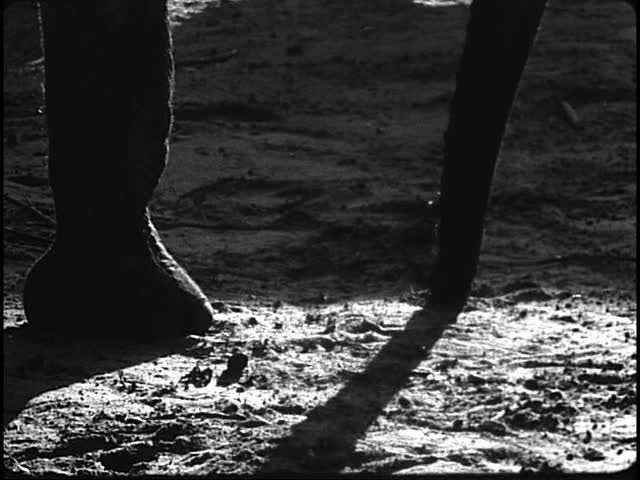

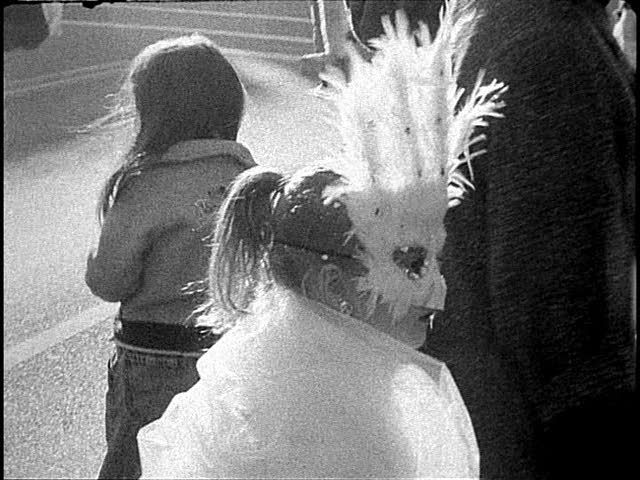

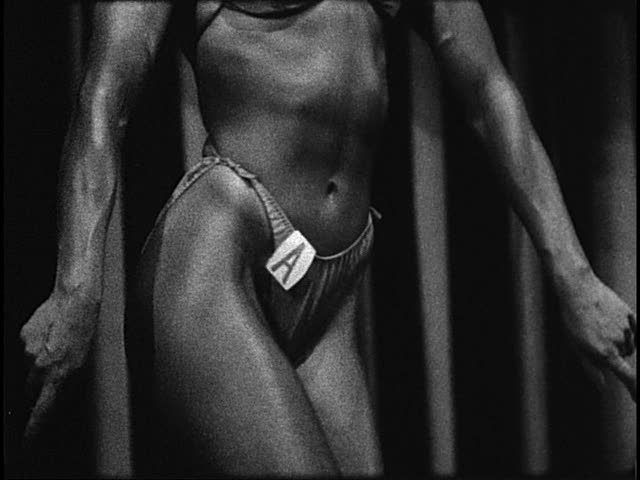

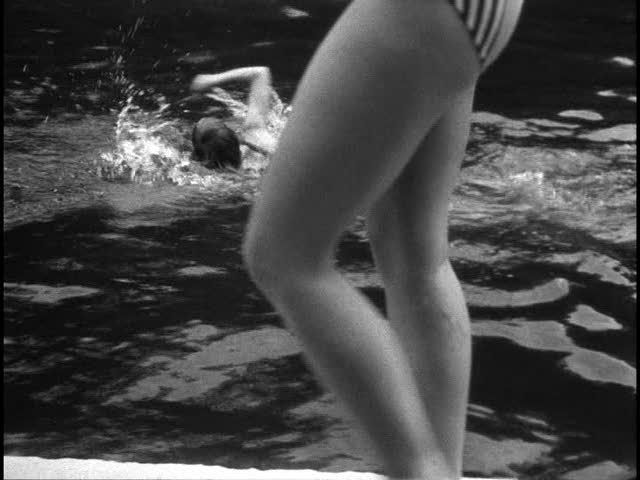
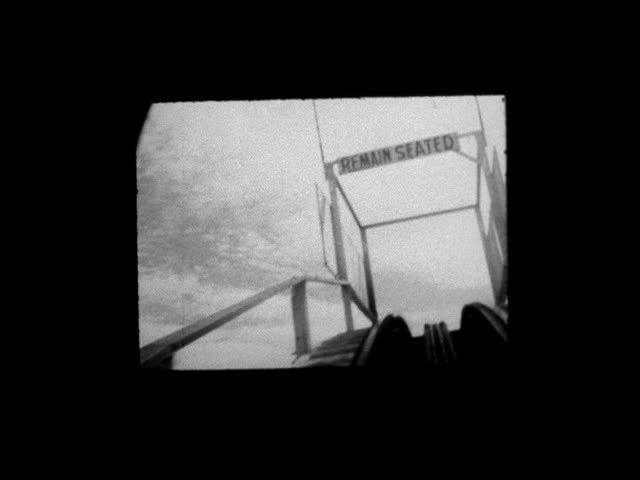
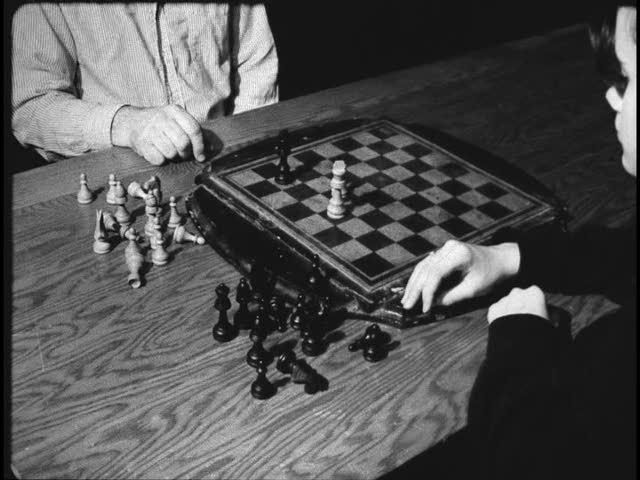


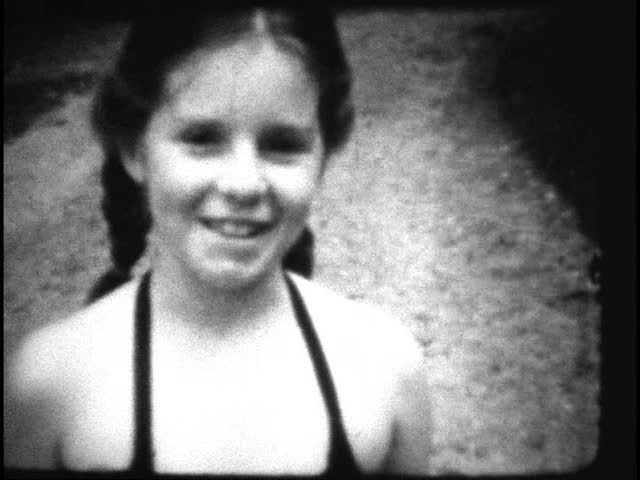


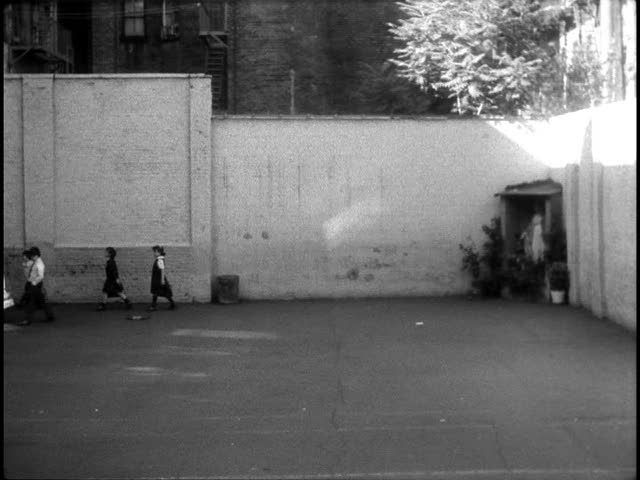
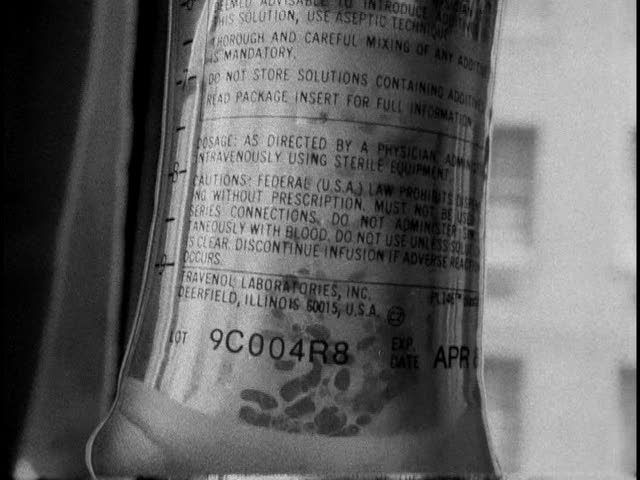
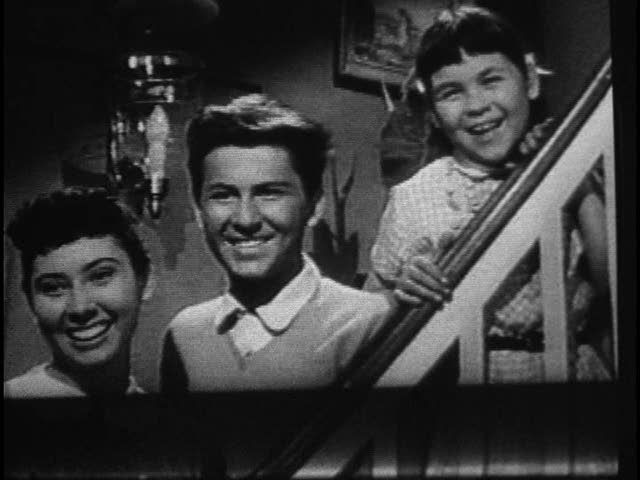
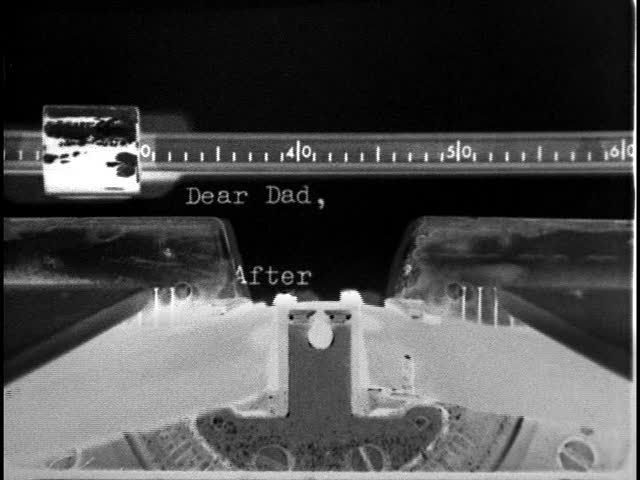

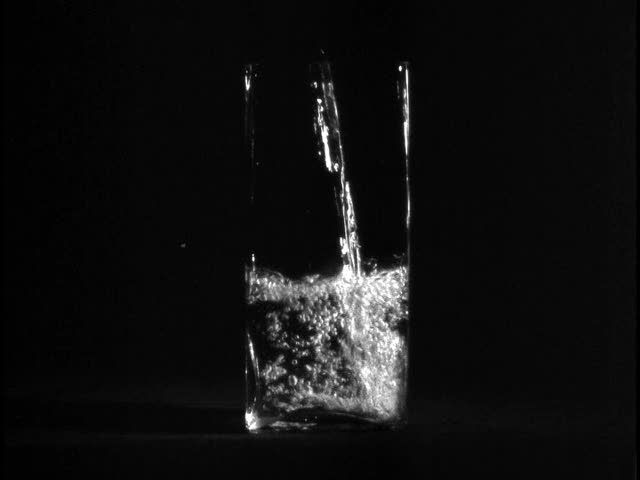
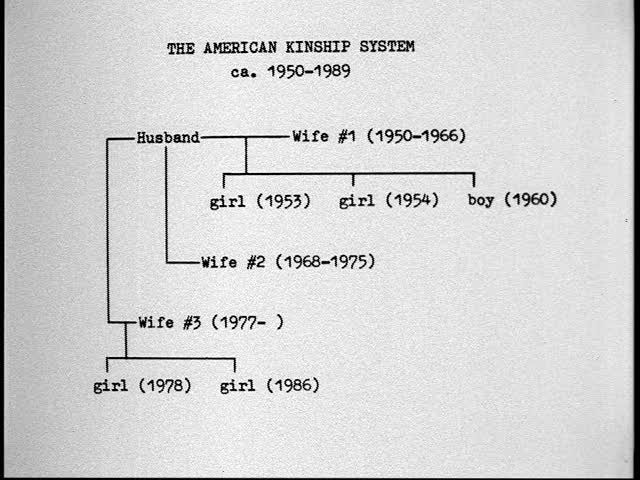
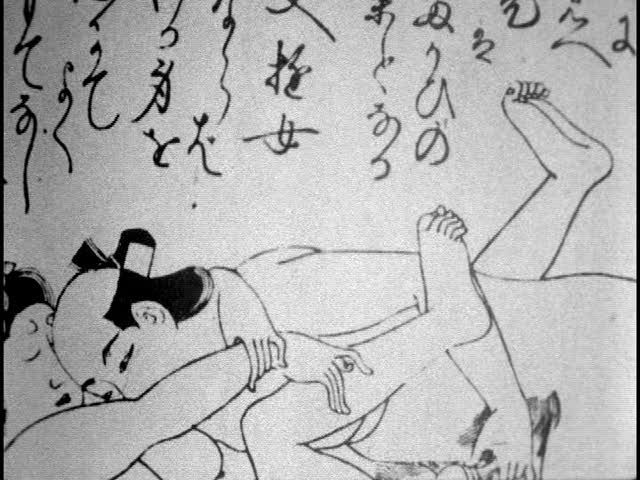
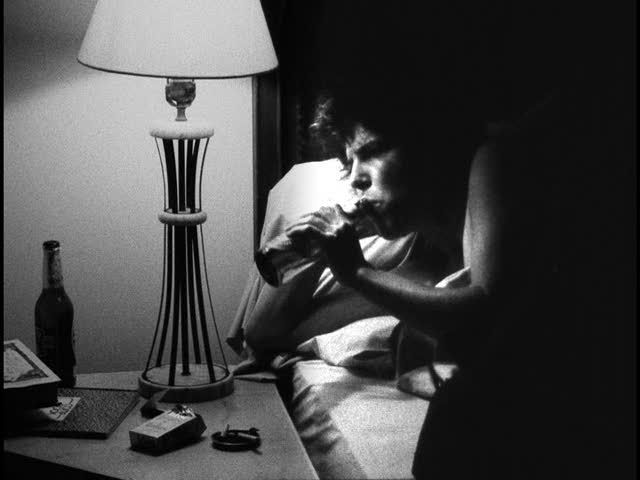

Over the past two decades, Su Friedrich has crafted an eloquent body
of films which probe many of the most intimate and fundamental concerns
of emotional experience: dreams (Gently Down the Stream, 1981), sexuality and religion (Damned If You Don’t, 1987), marriage (First Comes Love, 1991), break-ups (Rules of the Road, 1993), adolescence (Hide and Seek, 1996), and relationships to parents (The Ties That Bind, [1984] and Sink or Swim [1990]). Sink or Swim
charts-literally at one point with a kinship tree-Friedrich’s
relationship to her father, a relationship conditioned both by the
traumas occasioned by his particular coldness, even cruelty (the film’s
title is emblematic), and by the larger cultural conditions of gender,
marriage, and parenting roles endemic in Anglo-American culture of the
1950s. Although the film deals with the issue of emotional childhood
abuse, it is even-handed in its portrait of a career-driven and
emotionally disconnected father; as one critic suggests, “It doesn’t
come across as a strident denunciation of your father and the pain he
inflicted on you, so much as a series of tales in which both of you are
wounded because of the family structure” (1). Friedrich manages this double focus-personal and cultural-through her extraordinary formal care (Sink or Swim
took 3 years to make) and her balance of direct personal expression
with a mediated critical structure; as one critic said, the film is
“tough-minded and touching” (2).
For Friedrich, “The issue for me is to be more direct, or honest, about
my experiences, but also to be analytical. I think there’s a problem in
people seeing my films and immediately applying the word personal. Sink or Swim is personal, but it’s also very analytical, or rigorously formal” (3).
Friedrich’s exploration of fundamental concerns of emotional
experience are motivated by her personal experience: “You get to
something universal by being very specific [. . .] I think you have to
start at home” (4).
The textures, cinematic and emotional, of Friedrich’s work are both
private and highly mediated, embodying an aesthetic style and range of
concerns that make her one of the most innovative and accessible artists
currently working in the dynamic tradition of the modernist American
Avant-Garde:
Whenever I set out to make film, my
primary motive is to create an emotionally charged, or resonant,
experience-to work with stories from my own life that I feel the need to
examine closely, and that I think are shared by many people. I then try
to find a form which will not only make the material accessible, but
which will also give the viewer a certain amount of cinematic pleasure.
In that I feel somewhat akin to the structural filmmakers, since I do
like to play with the frame, the surface, the rhythm, with layering and
repetition and text, and the other filmic elements. (5)
Friedrich tempers the painful and urgent personal emotion of the film
by offering aesthetic pleasures effected by the exquisite textures of
her visual and aural style. The imagetrack is composed of home movies,
found footage, and Friedrich’s own rich cinematography, frequently
re-photographed through her renowned optical printing to modulate
intensities of light, contrast, grain, rhythm, and flicker. Friedrich
creates evocative and ironic resonances between what seems to be home
movie footage of her own family and television imagery of American 1950s
“perfect family” sitcoms (with such suggestive titles as “Make Room for
Daddy” and “Father Knows Best”), locating her personal history within a
larger social mythos. The soundtrack displaces the often self-indulgent
tone of the first-person autobiographical text (which, however
heartfelt, can distance rather than engage a viewer) by having
Friedrich’s story read by a young girl addressing herself in the third
person: “the girl” and “the father” take on wider resonances than
Friedrich’s singular personal history. Language appears in voice, text,
and song; Sink or Swim also uses articulate silences to shift attention from image to soundtrack.
Language is furthermore crucial to the film’s unconventional
narrative structure: Friedrich tells the story of growing up with her
father through 26 “short stories,” each corresponding to a letter of the
alphabet. Notably, this structure of development is presented backwards
from Z to A, suggesting the rebellious nature of Friedrich’s project:
to “unlearn” her upbringing, and attempt to exorcise some of the
founding traumas of childhood. Friedrich suggests some personal and
cultural resonances of this structure:
I got the alphabet idea at the very
beginning. My father is a linguist, and of course language is made up of
the alphabet. And because the film is about storytelling and speech, I
wanted to keep the alphabet in the forefront during the whole film. It’s
a very vivid experience of childhood to acquire the alphabet and then
to acquire the use of words. Traditionally, the primer is meant to teach
you the alphabet, but at the same time it teaches you a certain kind of
morality. (6)
Friedrich links the alphabet, the founding structure of language, to
its primary pedagogical function, the learning of social and
psychological rules. The Law of the Father, the acquisition of language,
the super-ego, family ties: all are linked to the linear structure of
the alphabet, here subverted through its reversal. Friedrich moves from
“Zygote,” a scientific beginning of life, to the final entry,
“Athena/Atalanta/Aphrodite”, a mythological trinity which encapsulates
three images of women: the stern goddess of knowledge sprung motherless
from her father’s head; a girl abandoned by her father, raised by
she-animals, who outraces and kills her would-be male suitors; and
finally the goddess of eros who tames Atalanta and tricks her into
marriage. Friedrich also cites one of her father’s books, in which he
points to the need to integrate sexual and maternal images of women (in
the figures of Aphrodite and Demeter), an integration he was clearly
incapable of in the filmmaker’s family. Dedicated to her father’s third
wife, his book becomes, in the film, an emblem of retrospective
blindness and insight for Friedrich who insists on her own particular
condensation and interpretation of female mythological figures, while
marking the ironies of her father’s “conclusions”.
The film concludes with a series of both moving and humorously
self-ironic stories which suggest the perhaps inescapable psychological
structures that the Father sets for all subjects. In the penultimate
section, we hear a story of an encounter between a now adult Friedrich
and her father with his 11 year old child from his third marriage. The
father interrupts a story being told by the young girl, telling her it
is “not interesting enough”; the episode concludes with Friedrich
looking out at her father and young daughter, the father distant,
reading a book, the young girl, alone, trying “to invent a more
interesting story”. On the imagetrack, we see the filmmaker trying hard
to image herself as “bad daughter”, rebelliously smoking and drinking in
bed, watching TV, lying naked in the bathtub. The last image is a
close-up on a cluttered ashtray with a book of matches emblazoned with
the words “WILD/ADULT”. Friedrich elucidates the powerful structuring
force of daughters performing for fathers; whether trying to please or
displease him, his judgement still conditions her actions. The film ends
with Friedrich singing “The Alphabet Song”, with its haunting final
words, “Now I know my ABCs/Tell me what you think of me”. -

Su Friedrich by
b. 12 December 1954, USA
Su Friedrich’s films achieve a unique synthesis of formal structures
and human experience that solidifies her position as one of the most
important contemporary experimental filmmakers in America. Her body of
work articulates a complex feminist and lesbian analysis of social and
cultural discourses, rituals, institutions, and power structures.
Friedrich’s films probe these concerns through intimate perspectives of
emotional experience: dreams (Gently Down the Stream [1981]), sexuality and religion (Damned If You Don’t [1987]), marriage (First Comes Love [1991]), break-ups (Rules of the Road [1993]), adolescence (Hide and Seek [1996]), relationships to parents and family (The Ties That Bind [1984] and Sink or Swim [1990]), and, in her most recent work, health and illness (The Odds of Recovery [2002]).
From her beginnings in the American feminist movement of the late
1970s, Friedrich has articulated the slogan “the personal is political”
with innovative language and narrative forms. Intense and specific
personal experiences sound out striking resonances with larger social,
political, and sexual structures. As Friedrich puts it, “You get to
something universal by being very specific [...] I think you have to
start at home.” But while the emotional textures of Friedrich’s work are
personal, they are also highly mediated, influenced by the modernist
legacy of the “structural” filmmakers of the 1970s. (1)
Her work is innovative and accessible—and beautiful (she is renowned
for her expertise in black and white cinematography and optical
printing).
Whenever I set out to make film, my
primary motive is to create an emotionally charged, or resonant,
experience—to work with stories from my own life that I feel the need to
examine closely, and that I think are shared by many people. I then try
to find a form which will not only make the material accessible, but
which will also give the viewer a certain amount of cinematic pleasure.
In that, I feel somewhat akin to the structural filmmakers, since I do
like to play with the frame, the surface, the rhythm, with layering and
repetition and text, and the other filmic elements. (2)
Friedrich’s ability to synthesize the stylistic and conceptual legacy
of avant-garde film practice with an analytical sense of human
experience makes her exemplary of the evolution of American experimental
film practice from the 1980s to the present. In this era film artists
freed themselves from the often doctrinaire politics of 1970s
avant-garde film practice to pursue new directions of both formal and
social invention.
Friedrich first attended the University of Chicago before graduating
Phi Beta Kappa from Oberlin College in 1974 with a background in Art and
Art History. From the mid-’70s to the early-’80s, Friedrich worked in
still photography and supported herself as a graphic artist in New York
while doing volunteer activist organizing in feminist organizations,
programming screenings, and writing for Downtown Review and Heresies: a Feminist Journal on Art and Politics.
She credits courses at Millennium Film Workshop, an important (and
affordable) experimental film production and exhibition institution, for
facilitating her entry into filmmaking.

Friedrich made six short films between 1978 and 1982, of which her breakthrough work, Gently Down the Stream
is most accomplished. Although some of these films are uneven in tone
and technique, they constituted an important crucible for the
development of her characteristic style. All of these films feature
striking black and white cinematography and sharp editing strategies
that make both rhythmic and conceptual connections, often contrasting
shot scale or motion direction. Hot Water (1978), her first
film, was shot on Super-8 and was an early experiment in sound
(Friedrich did not engage with sound again until The Ties That Bind in 1984). Hot Water is no longer in distribution but images from it were optically printed and incorporated into Gently Down the Stream. Although Friedrich herself calls Cool Hands, Warm Heart and Scar Tissue (both 1979) too “obvious” and “rigid”, they are characteristic of activist feminist art of the period. (3) Cool Hands, Warm Heart
stages, in a crowded New York street, a public performance of
conventionally private female grooming (shaving legs and armpits,
braiding hair), and is emblematic of the politics that critiques
feminine codes by bringing them, literally, to light and reversing the
power polarity inscribed in their setting. Scar Tissue,
meanwhile, is a simple but effective visual essay on gendered body
language, contrasting close-up images of strained women’s feet in high
heels with mid-sections of men, arms crossed in seemingly proprietary
and smug comfort. As Amy Taubin says, “Juxtaposed, the two [genders]
appear as if from totally different species; the film left me with a yen
to see one of those heels planted splat in the middle of one of those
bellies.” (4)
Gently Down the Stream shifts to what Friedrich calls the “messy” logic of dreams. (5)
The genesis of the film involved Friedrich’s revisiting her dream
journals, recorded over eight years, which uncovered a wealth of rich
personal imagery, much of it negotiating conflicts between the
repressions demanded by her Catholic upbringing and lesbian sexual
desire. She condensed 96 dreams down to 40 in a rough cut of the film,
and then down to the 14 dreams of the completed film. (These function
like chapters; Friedrich also released a small press printed version of
the film.) Meanwhile, she condensed image and word by scratching letters
directly onto celluloid, letter by letter or word by word, making
language a dynamic graphic element, and actively engaging the viewer in
the process of creating syntax. The silence of the film ensures that, as
Friedrich says, the viewer will “hear any voice but that of a
recorded narrator”; the intense pull of the words’ trajectory, combined
with the careful control of movement in the frame achieved through
Friedrich’s optical printing, creates a remarkable rhythm seeming to
float atop the water imagery which permeates the film and is echoed in
the song from which the film’s title is derived (“Row, row, row your
boat / Gently down the stream / Merrily, merrily, merrily / Life is but a
dream”). Although hardly linear, the film gradually progresses from
darkness to light, and from anger and guilt to release. The first dream
starts the film indoors (“Wander through large quiet rooms”) as ghostly
images of the Madonna flicker through the gate; the film concludes with
hummingbirds “humming on my tongue” in a playful, anarchic, and joyful
dance of words and letters scratched directly into the images of water
and sparkling light. By concentrating on her most intensely personal
conflicts (“I chose to work with dreams that were the most troubling to
me, that expressed my deepest fears, anxieties or longings”) she also
“worked through” recognizably social and political concerns with
sexuality, feminism, and religion, using images both disquieting (“I
make a second vagina / beside my first one / I look in surprise / Which /
is the original?”) and slyly ironic (“Building a model house for / some
man / Do it / without getting paid / Do it / wrong”).
The importance to Friedrich’s practice of “working through” the
personal with mediating formal structures is reflected in two other
(less successful) films from this period. Before making Gently Down the Stream, Friedrich made I Suggest Mine (1980,
not in distribution), in which she tried “to do something very
personal, entirely about me. I failed miserably.” As she notes, she
needed “some sort of distance” from such personal material (6). But No One (1982), the film that Friedrich made after Gently Down the Stream, echoes its technique and foundation of dream imagery, but loosens the condensation so crucial to the earlier film. But No One
uses a single dream, “one that disturbed me because of its seeming
amorality and passivity,” and illustrates it with “straight-forward,
vernacular images” from Friedrich’s neighborhood: fish being sorted at
the fishmonger, construction workers and prostitutes working on the
street. As Friedrich’s program notes indicate, the dream is dominated by
guilt and resists the libratory “working through” of Gently Down the Stream:
“In the dream, I was unable to act according to my good conscience.
When I woke up, the prostitutes were outside my window, still hard at
work. On a walk, I saw men building up and tearing down the city.
Meanwhile, fish were being slaughtered for my evening meal.” While
hardly a failure, the film lacks the thoughtful urgency that would
propel Friedrich’s filmmaking into the more complex and longer film
projects that form the core of her oeuvre.

The Ties That Bind (1984) is an exploration of Friedrich’s
relationship with her mother, Lore Bucher Friedrich, who grew up in
Germany during the rise of the Nazi party in the 1930s and moved to the
USA at the end of World War II with her American husband, Paul Friedrich
(Su’s father). Lore became a single mother of three children when her
husband left her in 1965. The bulk of the film consists of a series of
responses by Lore to questions that relate to Lore’s childhood
perspectives on the political events unfolding around her. The daughter
investigates her mother’s vulnerability to forces that profoundly
influenced her life but over which she had little or no control. As a
young person with hopes of attending college to study music, Lore’s
dreams were curtailed when her father died and she was sent to
secretarial school instead due to economic restraints. Hopeful for a
brighter future upon marrying Paul Friedrich, Lore’s aspirations were
frustrated once again when her husband left her with three children and
little money. At the conclusion of The Ties That Bind, we are told that “in 1980, after raising three children alone, she bought herself a piano and began to practice the scales.”
A poignant testimony to the limits of agency, The Ties That Bind
considers the genocidal atrocities of World War II from Friedrich’s
non-Jewish German mother’s perspective. In text scratched directly onto
the film stock, Friedrich ponders, “And after I blame the Germans OR
WISH THAT MY MOTHER COULD HAVE DONE SOME THING ANY THING I ask myself
what I would have done.” The film then cuts to a shot of a letter: “My
dear Friend; I need your help in combating a new wave of anti-Semitism
that is sweeping Europe.” The words “I got this in the mail last week”
follow in scratched text. Here, Friedrich establishes a connection with
her contemporary political situation, and at once establishes the
persistence of racism (specifically anti-Semitism) in our culture, and
provides examples of action that can be taken to mitigate its
pervasiveness. Earlier in the film, the narrator says “in August 1983,”
and in text, one word at a time, “I went to an army depot in rural New
York”—images of riot officers—“with 2500 other women”—images of
protestors being dragged away—“to oppose yet again”—more images of
protestors—“yet again another”—images of protestors—“war.” Friedrich,
then, answers the very question that she poses to herself, suggests that
there are alternatives for positive action, does not suggest that she
can answer this question definitively for her mother, nor speak with
authority about the possibilities of resistance that may or may not have
existed in her mother’s time.

Damned If You Don’t was an important contribution to the
inauguration of a feminist cinema of visual and sexual pleasure, a
contentious issue for feminist filmmakers and theorists more than a
decade after Laura Mulvey’s germinal “Visual Pleasure and Narrative
Cinema” (1975). Featuring a narrative structure and the depiction of
women’s bodies—forms and images proscribed by Mulvey’s essay—the film
reclaims the pleasures of character identification and of the sensual
visual field. The heart of the film’s narrative follows the episodic
seduction of a young nun (played by Peggy Healey) by an older woman (Ela
Troyano), but Friedrich interweaves the story with both experimental
cinema’s use of poetic images and documentary’s analytical
contextualization. The film begins with a humorous deconstruction of a
classical narrative, Powell and Pressburger’s Black Narcissus (1947),
as a voiceover emphasizes how, in the film’s conflict between a “good
nun” and a “bad nun,” evil becomes associated with acting on forbidden
desire. This binary of good and bad, sexual repression and sexual
expression, is metaphorically expressed in the film’s gorgeously
optically-printed high contrast shots of seals, swans, and snakes
gliding in water, their sensuous energies barely contained by the frame.
Meanwhile, another voiceover text cites Judith Brown’s Immodest Acts: The Life of a Lesbian Nun in Renaissance Italy, a text which functions, like Black Narcissus,
as a framing device for the central narrative seduction. Uncovering the
sexual energies thinly disguised in nuns’ submission to Christ, Immodest Acts
adds an historical dimension to Friedrich’s story, suggesting how the
prohibitions on lesbian sexual desire have been negotiated and
transgressed for centuries (often precisely through the indirection and
mediation of metaphorical imagery).
Sink Or Swim, Friedrich’s poignant autobiographical film
about her father, is perhaps her most celebrated work, synthesizing her
recurrent emotional, analytical, and formal concerns. Friedrich tells
the story of her relationship to her father through 26 chapters, each
corresponding to a letter of the alphabet. Notably, this structure of
development is presented backwards from Z to A, suggesting the
rebellious nature of Friedrich’s project: to ‘unlearn’ her upbringing,
and attempt to exorcise some of the founding traumas of a childhood
stamped by a sometimes abusive, but mostly absent father. Referencing
his career as a linguist, Friedrich literally turns language back upon
itself and moves through the alphabet from end to beginning. Friedrich
also invokes the myths of Zeus and Aphrodite—another Z to A trajectory.
If myths were created a posteriori to explain the afflictions
of human existence, so Friedrich uses film to reconstruct the events of
her own life in order to understand how these influences have coloured
her perspective. Friedrich reflects upon the assumptions inherent in
accepting the more monolithic structures of our culture as centres of
originary meaning by producing a version of history that, while it
appears to chart a normalized progression, actually teases out meaning
through juxtaposition and reflection rather than direct experience
(notably, a self-reflection of which her father seems incapable). The
social institutions that pose as centres of meaning are themselves
endowed with shifting cultural valences.
The reflective capacity of the film ensures, as well, that Sink or Swim
does not simply demonize the father; rather there remains a “tie that
binds”—but now characterized by the ambivalence of both interpolation
and loss. On the one hand, Friedrich captures the complexity of her
personal loss and yearning to communicate with her father in the section
entitled “Ghosts.” It opens with an image, in ghostly negative, of a
typewritten text:
Dear Dad,
After you left us, mom used to come home from work, make us dinner, send us to our rooms, and then sit in the living room in that dark orange armchair and play an album of Schubert Lieder over and over again. There was one song I particularly loved […] it was the one that made Mom cry the most. We would come in and tell her we loved her and we promised to be good so that you would come back again…[the song is] the one about a woman who yearns for her absent lover and feels she cannot live without him. It’s so strange to have such an ecstatic melody accompany those tragic lyrics. But maybe that’s what makes it so powerful. It captures perfectly the conflict between memory and the present.
Love,
P.S. I wish that I could mail you this letter.
After you left us, mom used to come home from work, make us dinner, send us to our rooms, and then sit in the living room in that dark orange armchair and play an album of Schubert Lieder over and over again. There was one song I particularly loved […] it was the one that made Mom cry the most. We would come in and tell her we loved her and we promised to be good so that you would come back again…[the song is] the one about a woman who yearns for her absent lover and feels she cannot live without him. It’s so strange to have such an ecstatic melody accompany those tragic lyrics. But maybe that’s what makes it so powerful. It captures perfectly the conflict between memory and the present.
Love,
P.S. I wish that I could mail you this letter.
The sound of the typewriter keys accompanies the text but fades to
silence over the “conflict between memory and the present,” suggesting
its ephemerality and poignancy. In spite of her desire to have him
understand, the gap that has been created in their relationship as a
result of her father’s departure remains unbreachable, even in the
girl’s imagination; all that remains is the precarious and careful dance
between ecstasy and tragic despair.
On the other hand, Friedrich’s adult sensibility gains a perspective
which can contextualize and understand her father’s subjectivity. In an
interview with Scott MacDonald entitled “Daddy Dearest,” Friedrich
comments “that abuse is more likely because of the inhuman situations
that are intrinsic to a society that divides roles along gender lines.” (7)
By linking her personal story to a pervasive cultural ethos at the
level of myth, Friedrich reveals the problematics of patriarchal
assumptions of authority. While she refuses to excuse her father’s
abusive behaviour, Friedrich recuperates positive results from her
childhood experience. Judith Mayne has observed that:
even though a cruel father emerges,
there is such a strong attempt to understand him that he does not come
across as an archetypal villain. He is the one who introduced his
daughter to the myths that will enable her to see possibilities of
female strength. And he too suffered loss. […] Friedrich obviously
shares much with her father, for she too is an anthropologist of sorts,
her camera observing and recording the rituals of father-daughter
relationships. (8)

First Comes Love is one of Friedrich more underappreciated
films, a wry, simmering film about the rituals of heterosexual marriage
that captures the complex ambivalence felt within North American gay and
lesbian communities towards the institution of marriage. The film
cross-cuts images from several traditional marriages, starting with the
couples arriving at church, proceeding to the alter and then departing
from the church in a hail of rice and confetti. Although Friedrich’s
camera is distanced, Stuart Klawans describes it as “both curious and
shy, as if the filmmaker were part anthropologist, part kid at the candy
store window.” (9)
Framing and editing analyze subtle but telling moments and gestures,
from the stoic catatonia of the grooms to the dominance of wedding
photographers choreographing the proceedings. But the film also captures
the genuine emotion felt by these couples, and their family and
friends; the ironic distance is not dismissive. The soundtrack, composed
solely of pop songs, comments further on the action while reinforcing
the creamy conformity of the rituals. Then, just as the couples make it
to the alter, the film cuts to a simple text scroll which lists all of
the nations which (in 1991) did not permit gay marriage—the list is a
long one—and then at the end of the film, Friedrich lists the single
nation that permits gay marriage: Denmark. This simple strategy, which
contrasts the lush life of heterosexual ritual with the stark legal and
constitutional realities of gay and lesbian relationships, reframes the
anthropological text with political rigor.
In 1993, Friedrich released her only videotape, The Lesbian Avengers Eat Fire Too,
an hour long documentary on the political action group The Lesbian
Avengers, of which Friedrich was a member. Composed of footage
documenting the group’s actions, the tape is a collaboration with Janet
Baus, and is, as Friedrich herself notes, an anomaly in her work, more
agit-prop than art, and motivated by different intentions:
It’s much more direct, more like
journalism than one of my films [...] I joined the group because I
wanted to do direct action with other lesbians. After doing it for many
months we had built up a huge library of tapes, because people would
document each action. Somebody had put together a shorter tape. It was
sort of a rough cut and we thought that we should have a more polished
tape to show around. I don’t think of it as my work, but more as
something I did for the group as an educational or activist tool. It’s
not art for me in the same way that my films are, which doesn’t make it
worse; it just makes it different. (10)

Rules Of The Road is a deceptively simple film that, like First Comes Love,
uses quasi-anthropological terms—here kinship groups—to trace the
history of a past lesbian relationship, its dissolution and the
emotional aftermath of the breakup. Friedrich structures the narrative
around the purchase of a car that comes to play a symbolic role in all
of these stages of the relationship. The narrator’s girlfriend purchases
a 1983 Oldsmobile station wagon and, with that purchase, was “initiated
into a special clan [...] by sharing the car with her, I felt I had
become an honorary member of that same family.” The film contains no
images of the women involved in the relationship, but images of
similarly-styled station wagons abound. The association between cars and
lovers represents the way in which cultural codes can limit
perspective. “The first time I laid eyes upon the car, I was
disappointed by its homeliness but consoled by the thought that it was
unique…Almost overnight I went from barely noticing their existence to
realizing that I lived in a world swarming with station wagons.” The
camera pans and tracks the street in a relentless search for such cars,
while the narrator reminisces about both happy and painful times in the
couple’s relationship. Her initiation into the family of station wagon
owners causes the narrator to feel a kinship in which she now recognizes
a category of car that she had been oblivious to before. It is not
until she is excluded by that “clan,” through her breakup, that she
comes to appreciate the individuality of those cars and looks to the
license plates in order to differentiate them from each other. After she
recounts the final breakup, station wagons are filmed moving in
opposite directions from each other, and quick cuts highlight the
narrator’s fear that she will be caught off-guard by seeing her
ex-lover’s car. Although the car in question is associated with a
painful experience, the narrator, by the end of the film, begins to
search for another used car: “I’ve been trying to acquaint myself with
the territory and I’m finding it difficult to figure out what makes one
car lovable and another one a heartache.” No longer joined through
matches on action, the cars are now filmed less as a single body,
crossing paths for brief moments but proceeding ultimately along their
own paths. With the new awareness of individuality and difference, the
narrator is able to see the world of choices open to her, and decides to
move on and purchase her own car.

Hide And Seek, financed partially through an ITVS
(Independent Television Service) grant, combines conventional codes of
narrative and documentary filmmaking to examine lesbian adolescence. The
narrative is told through the eyes of Lou, a twelve year old girl who
is attempting to find her own place in what becomes for her an
increasingly alienating heterosexually dominant culture. Lou’s story is
interwoven with documentary footage of Friedrich’s interviews with
twenty adult lesbians who reminisce about their own adolescent
experiences. Friedrich portrays vividly the intense camaraderie of young
girls and the pre-pubescent freedom that they experience in their
relationships with each other. Their world is full, but begins to
fracture when the subject of boys is introduced; what is missing is not
so much the possibility of having sexual relationships with other girls
but the ability to experience their bodies for themselves as opposed to
“for boys”, a completeness between mind and body that the onset of
imposed sexual taboos of any sort erodes. This point is emphasized in
the film when one of the adult women remembers having been sternly
reprimanded, at an early age, for indulging in masturbatory practices.
Friedrich examines the finer points of what is lost—a celebration of
physicality, the freedom to express desire. The film articulates Natasha
Walter’s observation that “although things that this society sees as
typically feminine have been taken by feminists as demeaning, the fault
lies not in the cultural tropes, but in their valuation.” (11) Hide and Seek
affirms the possibility of finding pleasure within a system that
attempts to deny that pleasure. The respectful and celebratory
representation of female bodies defuses the negativity associated with
the body, but also makes obvious the destructive effect that cultural
discourse can have upon a woman’s relationship with her own body.
Friedrich’s films, as a whole, centralize images of women’s bodies
and unreservedly exhibits the aesthetic seductiveness of female flesh
and movement. Close-ups of body parts, even as they offer fragmented
glimpses of women, are associated with moving bodies engaged in dancing,
clapping, rowing, playing cards or swimming, to name but a few
examples. The effects of this aesthetic treatment of women’s bodies is
not to “[turn] the represented figure…into a fetish so that it becomes
reassuring rather than dangerous,” (12)
but simply to appreciate the beauty and strength of these women and
their movements. Friedrich discusses her commitment to the creation of
cinematic pleasure in her interview with Scott MacDonald: “There was a
period when I thought it was important to deny myself everything,
including all kinds of film pleasure, in order to be politically correct
and save the world, but I think if you do that, you deplete yourself
and then have nothing to offer the rest of the world.” (13)
A valuable element of Friedrich’s “reappropriation of pleasure … for
women” derives from her reappropriation of mainstream productions that
seemingly deny the existence of lesbian desire. One interview subject in
Hide and Seek talks about how she was able to ‘play’ with
conventional media images as a child in order to make the scenarios
conform to her own same-sex fantasies. While they watched the television
show “The Monkees”, the woman played out the scene with her girlfriend.
They pretended that one of them was Davy Jones and the other was a
woman he was kissing. The two girls would then enact romantic encounters
by packing suitcases and imagining that they were going to a hotel
together, and then cuddling, naked, on the bed. By overlaying the
dialogue with images from the television show, the film simultaneously
emphasizes the tremendous power of media depictions of heterosexuality
and attests to the even greater flexibility of human imagination.
Repeatedly in her films, Friedrich’s ability to balance affective and
intellectual responses dramatizes the decidedly mixed reactions that
marginalized spectators can have to productions that are at once
appealing and alienating. Friedrich reveals, not only how political
structures have the potential to oppress, but how they can be, however
provisionally, overcome. Friedrich is not content to offer conclusive or
facile answers. She balances mitigating circumstances, conflicted
intentions, and self-reflexive hypotheses to open up the diverse and
multifaceted possibilities of interpretation and growth. The agency with
which it is possible to redirect one’s life is not depicted by
Friedrich as capable of overcoming all obstacles; rather, small
accomplishments that lead along a path of emancipation are recognized
and celebrated. She does not pretend that it is not a painful process,
but she encourages the indulgence of pleasures—including cinematic
pleasures—that bolster and sustain well-being.

Filmography
Hot Water (1978) 12 mins, super-8, b&w, sound
Cool Hands, Warm Heart (1979) 16 mins, 16mm, b&w, silent
Scar Tissue (1979) 6 mins, 16mm, b&w, silent
I Suggest Mine (1980) 6 mins, 16mm, b&w, silent
Gently Down the Stream (1981) 14 mins, 16mm, b&w, silent, 18fps
But No One (1982) 9 mins, 16mm, b&w, silent
The Ties That Bind (1984) 55 mins, 16mm, b&w, sound
Damned If You Don’t (1987) 42 mins, 16mm, b&w, sound
Sink or Swim (1990) 48 mins, 16mm, b&w, sound
First Comes Love (1991) 22 mins, 16mm, b&w, sound
Rules of the Road (1993) 31 mins, 16mm, color, sound
Lesbian Avengers Eat Fire (1994) 60 mins, video, color, sound
Hide and Seek (1996) 65 mins, 16mm, b&w, sound
The Odds of Recovery (2002) 65 mins., 16mm, color, sound
SINK OR SWIM
by Su Friedrich
The Greek god Zeus had a wife named Hera, but he also had numerous love affairs and many illegitimate children. Furthermore, he had one child who was born without a mother. This was his daughter Athena, the goddess of war and justice, who sprang from his head fully grown and dressed for battle. She became chief of the three virgin goddesses and was known as a fierce and ruthless warrior. Because she was his favorite child, Zeus entrusted her to carry his shield, which was awful to behold, and his weapon, the deadly thunderbolt. There was a little girl Who had a little curl Right in the middle of her forehead. When she was good She was very, very good And when she was bad She was horrid. The girl's father had a sister whom he loved very much. As children, they lived on a farm in New England and went swimming during the summer at a neighbor's pool, which was fed by ice cold spring water. His sister usually waited until he finished his chores, but one day she went alone, knowing that he would come by soon after. She ran quickly down the unpaved road and was covered with dust and sweat by the time she arrived. It was a hot afternoon, but the pool was deserted. She tore off her clothers, dove into the icy water, and died immediately of a heart attack. When her brother came back from work that day, no one was at home. He expected to find everyone at the pool, and started walking towards the neighbor's house. He heard a scream. He started to run. The screams grew louder. He raced into the front yard and saw his mother kneeling on the ground beside the lifeless body of his sister. The wake was held at their home, and throughout the following nights he sat and watched over her. No one blamed him for her death, but he carried the burden of guilt and loss for many years. (This section uses a song by Franz Schubert. The recording is in German; the text below is simply for information--IT SHOULD NOT BE TRANSLATED for any screening of the film.) "GRETCHEN AM SPINRADE"
Meine Ruh' ist hin
The Greek god Zeus had a wife named Hera, but he also had numerous love affairs and many illegitimate children. Furthermore, he had one child who was born without a mother. This was his daughter Athena, the goddess of war and justice, who sprang from his head fully grown and dressed for battle. She became chief of the three virgin goddesses and was known as a fierce and ruthless warrior. Because she was his favorite child, Zeus entrusted her to carry his shield, which was awful to behold, and his weapon, the deadly thunderbolt. There was a little girl Who had a little curl Right in the middle of her forehead. When she was good She was very, very good And when she was bad She was horrid. The girl's father had a sister whom he loved very much. As children, they lived on a farm in New England and went swimming during the summer at a neighbor's pool, which was fed by ice cold spring water. His sister usually waited until he finished his chores, but one day she went alone, knowing that he would come by soon after. She ran quickly down the unpaved road and was covered with dust and sweat by the time she arrived. It was a hot afternoon, but the pool was deserted. She tore off her clothers, dove into the icy water, and died immediately of a heart attack. When her brother came back from work that day, no one was at home. He expected to find everyone at the pool, and started walking towards the neighbor's house. He heard a scream. He started to run. The screams grew louder. He raced into the front yard and saw his mother kneeling on the ground beside the lifeless body of his sister. The wake was held at their home, and throughout the following nights he sat and watched over her. No one blamed him for her death, but he carried the burden of guilt and loss for many years. (This section uses a song by Franz Schubert. The recording is in German; the text below is simply for information--IT SHOULD NOT BE TRANSLATED for any screening of the film.) "GRETCHEN AM SPINRADE"
Meine Ruh' ist hin
copyright 1990
Please Note:
Each title word (like ZYGOTE ) appears on a title card at the beginning of the story, so they should be translated/included.
Some sections have no accompanying text; these are indicated.
Some sections have no accompanying text; these are indicated.
-------------------------
ZYGOTE
Y CHROMOSOME (no story with this section)
X CHROMOSOME
(no story with this section)
WITNESS
VIRGIN
Y CHROMOSOME (no story with this section)
X CHROMOSOME
(no story with this section)
WITNESS
VIRGIN
When the girl went out to play, the water running in the gutter
was the Nile River. Her tree house was a harem filled with beautiful
women wrapped in silk and covered in jewels. When she got on her
bicycle, the girl rode bareback on a great, black stallion. Whenever she
swam near the jetty, she saw mermaids with golden hair darting through
underwater caverns. And her father was the smartest and most handsome
man she'd ever met.
UTOPIA
The girl and her sister were forbidden to eat sugar, and their father
refused to buy a television set, but once a week they were transported
into a world of pleasure.
On Friday night at 7:30, they went across the hall to the home of an elderly man. He took them first to the kitchen, where they were allowed to make their own ice cream sundaes. He always gave them several flavors of ice cream and toppings, and assorted fruits and nuts and sprinkles to choose from.
When everything was ready, they carried their sundaes into the living room. The lights were turned off, the TV was turned on, and they sat in the dark for an hour and watched Don Ameche's Flying Circus Show.
On Friday night at 7:30, they went across the hall to the home of an elderly man. He took them first to the kitchen, where they were allowed to make their own ice cream sundaes. He always gave them several flavors of ice cream and toppings, and assorted fruits and nuts and sprinkles to choose from.
When everything was ready, they carried their sundaes into the living room. The lights were turned off, the TV was turned on, and they sat in the dark for an hour and watched Don Ameche's Flying Circus Show.
TEMPTATION
On her seventh birthday, the girl's father gave her a book about
Greek mythology. She would sit in the closet and read the stories long
after being sent to bed. One night, her father came home late from work
and caught her in the middle of a chapter. He lay down on the bed, put
his hands behind his head, and asked her to tell him her favorite myth.
It was the story of Atalanta, who was abandoned at birth because her father had wanted a son. She was left in the forest to die, but was discovered by a female bear and raised to become a great athlete and hunter. When her father heard the news, he realized that she was as good as a man, and took her back into his home.
Atalanta had vowed never to marry, and would race any man who hoped to win her hand. Although they were punished by death for losing the race, many men tried and failed. But Aphrodite, the goddess of love, thought it was time for Atalanta to lose both the race and her heart, and so she offered to help a young man named Hippomenes.
On the appointed day, he came armed with three apples made of solid gold. The race began, and as soon as Atalanta overtook Hippomenes, he dropped the first apple at her feet. She stopped to retrieve the precious fruit and then soon caught up with him, but he threw the second apple across her path. She decided to stop once again, but now it became more difficult to overtake him. When she did, he threw the last apple far from the track. Atalanta couldn't resist veering from her course, but as a result she lost the race and was forced to accept his hand in marriage.
It was the story of Atalanta, who was abandoned at birth because her father had wanted a son. She was left in the forest to die, but was discovered by a female bear and raised to become a great athlete and hunter. When her father heard the news, he realized that she was as good as a man, and took her back into his home.
Atalanta had vowed never to marry, and would race any man who hoped to win her hand. Although they were punished by death for losing the race, many men tried and failed. But Aphrodite, the goddess of love, thought it was time for Atalanta to lose both the race and her heart, and so she offered to help a young man named Hippomenes.
On the appointed day, he came armed with three apples made of solid gold. The race began, and as soon as Atalanta overtook Hippomenes, he dropped the first apple at her feet. She stopped to retrieve the precious fruit and then soon caught up with him, but he threw the second apple across her path. She decided to stop once again, but now it became more difficult to overtake him. When she did, he threw the last apple far from the track. Atalanta couldn't resist veering from her course, but as a result she lost the race and was forced to accept his hand in marriage.
SEDUCTION
The girl's father had fallen asleep while she told the story of Atalanta, so he didn't get to hear the end of it.
Atalanta was married soon after losing the race and to her surprise, she found happiness in her new life with Hippomenes. Because the power of Aphrodite had brought them together, they were obliged to pay homage to her. But like most newlyweds, they thought only of each other and neglected to fulfill their sacred duties. The goddess of love took offense at their behavior and in revenge she turned them both into lions.
Atalanta was married soon after losing the race and to her surprise, she found happiness in her new life with Hippomenes. Because the power of Aphrodite had brought them together, they were obliged to pay homage to her. But like most newlyweds, they thought only of each other and neglected to fulfill their sacred duties. The goddess of love took offense at their behavior and in revenge she turned them both into lions.
REALISM
One day the girl told her father that she wanted to learn to swim.
That evening they went to the university pool. He took her to the deep
end, explained the principles of kicking and breathing, said she'd have
to get back all by herself, and then tossed her in.
She panicked and thrashed around for a while, but finally managed to keep her head above water. From that day on, she was a devoted swimmer.
When they went to New Hampshire the following summer, she spent most of her time at a nearby lake. The water was a strange orange color, but it was sweet and cool, and the banks were lined with birch and pine trees.
Her father could swim all the way across, but sometimes he would stay near the shore with her, or sun himself on a raft while she practiced her dives. One afternoon, as she watched the water dry on her skin, he began to tell her about water mocassins. They live in nests at the bottom of lakes, he said, and if someone happens to come swimming by, they rush to the surface and cover the person with poisonous bites. The girl stared at the water and wondered whether they could even bite through her bathing suit.
That evening, she read the encyclopedia entry and discovered that water mocassins live primarily in the South and a few Midwestern states. Her mother explained that this meant they were thousands of miles away from her, but a geography lesson wasn't enough to comfort the girl.
She panicked and thrashed around for a while, but finally managed to keep her head above water. From that day on, she was a devoted swimmer.
When they went to New Hampshire the following summer, she spent most of her time at a nearby lake. The water was a strange orange color, but it was sweet and cool, and the banks were lined with birch and pine trees.
Her father could swim all the way across, but sometimes he would stay near the shore with her, or sun himself on a raft while she practiced her dives. One afternoon, as she watched the water dry on her skin, he began to tell her about water mocassins. They live in nests at the bottom of lakes, he said, and if someone happens to come swimming by, they rush to the surface and cover the person with poisonous bites. The girl stared at the water and wondered whether they could even bite through her bathing suit.
That evening, she read the encyclopedia entry and discovered that water mocassins live primarily in the South and a few Midwestern states. Her mother explained that this meant they were thousands of miles away from her, but a geography lesson wasn't enough to comfort the girl.
QUICKSAND
One evening, the girl's father took her to see a movie about a man
who invents a machine in which he can travel through time. When he gets
to the year 20,000 he discovers a world full of beautiful, happy and
passive people. He also finds a library full of rotting, unused books
and realizes that the beautiful people no longer understand or care
about the principles of western civilization. As a result, they devote
their lives to pleasure and then let themselves be eaten by green
monsters who live in underground caverns.
The relationship between the two groups is simple: Every time the monsters get hungry they ring a siren and the beautiful people rise like zombies and march into the caverns to their death.
The girl was terrified by the wail of the siren and didn't want to see the people get slaughtered like animals. Closing her eyes, she begged to leave the theater. Her father reached over, pulled her hands from her face, and insisted that she watch the rest of the movie.
The relationship between the two groups is simple: Every time the monsters get hungry they ring a siren and the beautiful people rise like zombies and march into the caverns to their death.
The girl was terrified by the wail of the siren and didn't want to see the people get slaughtered like animals. Closing her eyes, she begged to leave the theater. Her father reached over, pulled her hands from her face, and insisted that she watch the rest of the movie.
PEDAGOGY
The girl loved to play games and also loved to win. It gave her a
special thrill whenever she beat a boy in a race or a wrestling match.
They always expected her to give in first, but she'd let them break her
arm before she cried "Uncle!"
Her father didn't like to play games but he was fond of chess and offered to teach it to her. Unlike the boys, he expected her to be an aggressive opponent. The girl was happy to have a game to play with him and took his lessons seriously. After many attempts, she beat him for the first time. The victory tasted sweet until she realized that the price of it had been her favorite opponent. From that day on, he never played with her again.
Her father didn't like to play games but he was fond of chess and offered to teach it to her. Unlike the boys, he expected her to be an aggressive opponent. The girl was happy to have a game to play with him and took his lessons seriously. After many attempts, she beat him for the first time. The victory tasted sweet until she realized that the price of it had been her favorite opponent. From that day on, he never played with her again.
OBLIVION
Because he was an anthropologist and linguist, the girl's father told
her many stories about how other people celebrate the rites of
childbirth, puberty, marriage and death. She liked to imagine being an
Indian or an African girl dancing and singing in one of those
ceremonies. By comparison, American rituals began to seem dull and
superficial. She thought that might be why he took so little interest in
trimming their Christmas tree or going to mass with her on Father's
Day.
But one year he suggested that she have an ice skating party for her birthday. When they got to the rink, all her friends lined up for a chance to skate with him. The girl offered to go at the end and drank some hot chocolate while they circled past. Her friends seemed to be enjoying themselves, but when her turn came she was surprised at how fast he skated. She couldn't keep up with him and couldn't convince him to slow down. After a while, she just let herself be pulled along over the bumpy ice.
But one year he suggested that she have an ice skating party for her birthday. When they got to the rink, all her friends lined up for a chance to skate with him. The girl offered to go at the end and drank some hot chocolate while they circled past. Her friends seemed to be enjoying themselves, but when her turn came she was surprised at how fast he skated. She couldn't keep up with him and couldn't convince him to slow down. After a while, she just let herself be pulled along over the bumpy ice.
NATURE
One summer, her father went away to teach at a different
university in the Midwest. A few miles from the campus, there was an
abandoned quarry which had been filled by the spring rains. He set out
alone one evening, hoping to go for a swim under the full moon. At the
quarry, a sign was posted warning people not to enter the water. Her
father was hot and tired after the long hike, but decided to wait and
ask someone about it. When he did, they told him he was a very lucky
man. The previous summer, a visiting professor had gone there for a swim
and was attacked and killed by a nest of water mocassins.
MEMORY: Part One
MEMORY: Part Two
MEMORY: Part Two
Twenty years later, the girl's father wrote about poem about the first week in the life of his firstborn child.
He describes walking the streets with her, sitting quietly as she takes a bottle, and staring into her dark eyes. He realizes that no one can predict the course of a child's life, but tries to imagine her as a young girl running off to school or as a grown woman with a life of her own. He ends the meditation by saying, "All this must come as the questions are answered, but now there is only the quiet face that replaces a drowned sister at last."
He describes walking the streets with her, sitting quietly as she takes a bottle, and staring into her dark eyes. He realizes that no one can predict the course of a child's life, but tries to imagine her as a young girl running off to school or as a grown woman with a life of her own. He ends the meditation by saying, "All this must come as the questions are answered, but now there is only the quiet face that replaces a drowned sister at last."
LOSS
The girl liked to sleep late, eat between meals, keep her room messy,
and fight with her sister. She made her mother miserable but couldn't
stop doing what she wanted to do. Her father didn't seem to care as
much, because he spent most of his time at the office. Once in a while,
though, he would come home in the middle of a huge fight and the girl's
mother would beg him to do something about her crazy children.
Since threats and minor punishments had almost no effect, he decided one evening to try a different approach. While the girls continued to fight, he went into the bathroom and turned on the faucets. A few minutes later he went down the hall, grabbed the girls by their hair, dragged them into the bathroom, and made them kneel beside the tub. After warning them not to disobey their mother anymore, he pushed their faces into the water.
The girl started to scream. The screaming made her start choking. She kicked and punched at his legs and tried to wrench her head away, but his hands were large and strong. No. She would have to keep perfectly still now, because every move she made took away another breath. There was a pain spreading through her chest, a pressure building in her head, Let me go, I never meant to be so bad, I just get like this sometimes, Let me go, I would have said I was sorry, Please let me go! Her eyes were wide open, her lungs were going to explode, she was grabbing wildly at the air and screaming into the water when she suddenly felt his grip loosen on her neck.
She dropped to the floor, coughing and shivering. Her sister sat across from her in a puddle of cold water while her mother stood nearby screaming and crying.
Since threats and minor punishments had almost no effect, he decided one evening to try a different approach. While the girls continued to fight, he went into the bathroom and turned on the faucets. A few minutes later he went down the hall, grabbed the girls by their hair, dragged them into the bathroom, and made them kneel beside the tub. After warning them not to disobey their mother anymore, he pushed their faces into the water.
The girl started to scream. The screaming made her start choking. She kicked and punched at his legs and tried to wrench her head away, but his hands were large and strong. No. She would have to keep perfectly still now, because every move she made took away another breath. There was a pain spreading through her chest, a pressure building in her head, Let me go, I never meant to be so bad, I just get like this sometimes, Let me go, I would have said I was sorry, Please let me go! Her eyes were wide open, her lungs were going to explode, she was grabbing wildly at the air and screaming into the water when she suddenly felt his grip loosen on her neck.
She dropped to the floor, coughing and shivering. Her sister sat across from her in a puddle of cold water while her mother stood nearby screaming and crying.
KINSHIP
Mein Herz ist schwer
Mein Herz ist schwer
Ich finde, ich finde sie nimmer
Und nimmermehr.
Wo ich ihn nicht hab'
Ist mir das Grab
Die ganze Welt
Ist mir vergaellt.
Mein armer Kopf
Ist mir verrueckt
Mein armer Sinn
Ist mir zerstueckt.
Meine Ruh' ist hin
(etc. as per above)
Nach ihm nur schau' ich
Zum fenster hinaus,
Nach ihm nur geh' ich
Aus dem Haus.
Sein hoher Gang,
Sein edle' Gestalt,
Seines Mundes Lacheln,
Seiner Augen Gewalt,
Und seiner Rede
Zauberfluss,
Seine Haendedruck,
Und ach, sein Kuss!
Meine Ruh' ist hin
(etc.)
Mein Busen draengt
Sich nach ihm hin;
Ach durft ich fassen
Und halten ihn!
Und kussen ihn
So wie ich wollt,
An seinen Kuessen
Vergehen sollt'!
O konnt ich ihn kuessen
So wie ich wollt,
An seinen Kuessen
Vergehen sollt!
An seinen Kuessen
Vergehen sollt!
Meine Ruh' ist hin
Mein Herz ist schwer.
"GRETCHEN AT THE SPINNING WHEEL"
My peace is gone
My heart is heavy
I can never find peace
And will never again.
Wherever he leaves
Becomes a grave;
The whole wide world
Is gall to me.
My poor head
Is coming loose,
My poor mind
Is shattered.
My peace is gone
(etc.)
I look out the window
Just to see him,
I leave the house
Only to find him.
His manly stride,
His nobel form,
The smile on his lips,
The power in his eyes,
The magic flow
Of his talk,
The clasp of his hand,
And oh, his kiss!
My peace is gone
(etc.)
My bosom aches
So much for him;
Ah, could I but grasp him
And hold him!
And kiss him
Just as I want,
To melt away
Beneath his kisses!
Oh could I but kiss him
Just as I want,
To melt away
Beneath his kisses!
To melt away
Beneath his kisses! My peace is gone
My heart is numb.
For the most part, the girl filled it with stories about doing punishment assignments, fighting with the boys, and playing with her friends. Because she didn't write every day, there were still empty pages left when her parents told her they were getting a divorce.
The girl was too ashamed to tell anyone and even kept it a secret from her best friend for more than a year, but she did confess it to her diary. It felt as if the act of writing it down would make it really come true, so she used a pencil instead of her favorite cartridge pen.
The next time she looked inside, the entry had been erased. Her mother was the only possible suspect.
Early one evening, her father came over to pick up a few things. The girl hoped he would stay for a while, but her parents got into a fight and he left a short time later.
Her mother was furious and called the girl and her sister onto the front porch. She opened one of the casement windows and had the two girls climb onto the sill. As she held her arms around their waists, they stared in fear at the sidewalk far below. Their father was halfway down the block by now and their mother had to scream to get his attention. He stopped, turned around slowly, and looked up at them. The girl had an urge to wave, but she felt her mother's grip tighten around her waist. Then her mother leaned forward and began to shout down at him, "You think you can just leave us like this, just walk away from your home and you kids, but what if we all jumped out the window now and landed in a pile at your feet? How would you feel then?"
The girl waited for her father to do or say something, but he just stared at them for another long moment and then shook his head and walked away.
Dear Dad,
After you left us, Mom used to come home from work, make us dinner, send us to our rooms and then sit in the living room in that dark orange armchair and play an album of Schubert Lieder over and over again.
There was one song I particularly loved. I never knew what the lyrics meant but it was the one that made Mom cry the most. We would come in and tell her we loved her and we promised to be good so that you would come back again.
I recently got a translation of that song, "Gretchen at the Spinning Wheel". Do you know it already? It's the one about the woman who yearns for her absent lover and feels she cannot live without him.
It's so strange to have such an ecstatic melody accompany those tragic lyrics. But maybe that's what makes it so powerful: It captures perfectly the conflict between memory and the present.
Love,
P.S. I wish that I could mail you this letter.
One evening he took her to a Japanese restaurant, introduced her to his second wife and asked if she'd like to go with them on a trip to Mexico. She felt nervous at the thought of being around his wife, but agreed to the plan. He called a few weeks later to say that his wife had decided to stay at home, and so they went alone.
The girl was proud to be with her father and he seemed happy to give her a complete tour of Mexico City. At the end of a hot and tiring week, they headed for Acapulco.
The first day on the beach, the girl was approached by a young boy wearing a pale yellow shirt and a thin gold chain. He didn't speak any English and she only know how to say Please and Thank You. After a few hours with him, she realized that she had forgotten to meet her father for lunch.
He was furious and warned her not to make the same mistake twice. The girl was afraid of him but the next day she was late for both lunch and dinner. He woke her up early the following morning and told her to pack her bags and meet him in the lobby. When she got there, he said they were leaving for Mexico City so that she could catch the next flight back to Chicago alone.
She sat by herself on the back of the bus and watched the coastline disappear. They didn't speak another word to each other until she left him at the gate and boarded the plane for home.
He begins the poem by calling her, "Remote as moonlight since I gutted the family with my exodus."
Later on he asks, "Did you need that Adonis of the beaches?"
And he ends the poem by declaring, "Your eyes at our parting condensed all children orphaned by divorce/ A glance through a film of tears at a father dwindling to a speck."
The girl had waited so long to get some kind of apology from him but this wasn't the one she imagined. He still didn't realize that he had been acting like a scorned and vengeful lover and that hers had not been the tears of an orphaned child, but those of a frustrated teenage girl who had had to pay for a crime she didn't commit.
ca. 1950-1989
-------------------Wife #2 (1968-1975)
-------------------Wife #3 (1977- ) = girl (1978) + girl (1986)
Many years later she went to the library and looked him up in the card catalogue. She wondered what he'd been writing while deciding to get a divorce. The only book available was a collection of articles entitled "Language, Context and the Imagination." She discovered that two of the books written that year involve the study of kinship systems. One is called "The Linguistic Reflex of Social Change: From Tsarist to Soviet Russian Kinship." The other one is entitled "Proto-Indo-European Kinship."
In the hopes of learning something about his approach to family life, she carried the book to a nearby table. For an hour she tried to read through the first one, but couldn't understand a word he'd written.
In the final chapter, he analyses the age-old schism between the two kinds of love. He points out that patriarchal cultures have always felt threatened by the coexistence of sexual desire and maternal devotion in a woman. He speculates that there may have been an earlier goddess who embodied the qualities of both Aphrodite and Demeter, and argues for the need to reintegrate those two states of ebing.
The book is dedicated to his third wife.
Last summer the woman had a job teaching in a city close to where her father lives. She invited him to come up for a visit and he offered to bring along his eleven year old daughter. The woman hadn't seen the girl for several years and said she looked forward to meeting her again.
The following Sunday she picked them up at the bus station and took them to her house for lunch. As they ate ham sandwiches in the yard, the woman sat quietly and listened to the conversation between her father and the young girl. No matter what they talked about, it came out sounding like a debate or a lecture.
The woman took another sip of lemonade. She wanted to join them but felt she was in the presence of something too familiar. Just then the father stopped the girl in midsentence to say that her story didn't interest him. The woman became rigid with fear. This was her childhood, being played out all over again by the young girl. And then it occurred to her that the girl was the same age she had been when her father left their home so long ago.
She got up quickly, carried their plates into the kitchen and opened a bag of cookies. She was sure that her father would never leave his new family: He was older now and happily married. She looked out the window and saw that he had gone to lie down in the shade. At that moment, she didn't know whether to feel pity or envy for the young girl who sat alone in the sunshine trying to invent a more interesting story.
On her last visit, she went with friends. For a few hours, the woman read and played around in the shallow waters, but then decided it was time to start her journey across the lake. As she swam, she began to worry...she fought with herself...the shore got further away...her legs began to cramp...he loves me in spite of this...he loves me not...I have to do this...I'll never make it...I'm halfway there...I want to rest.
It frightened her to stare into the deep water, so she turned over and began doing the backstroke. Then she thought, Maybe the water mocassins will put me out of my misery. Or maybe I'll drown trying to do this. If that happens, will he realize what I wanted to accomplish? Will he know I was doing it for his sake?
But she remembered her mother, who had held on to him so long after he was gone. Was it any different with her now, stuck in the middle of the lake and not knowing whether to go further or turn back?
She stopped swimming and began to float under the bright sky. The sun warmed her face and the water surrounded her like a lover's arms. She thought of her friends lying on the sandy beach and realized how tired she had become. It was time to start the long swim back to shore.
On the way, she only stopped once to turn around and watch her father as he beat a slow and steady path away from her through the dark orange water.
A,B,C,D,E,F,G
H,I,J,K,L,M,N,O,P
Q,R,S,T,U and V
W,X, and Y and Z
Now I've said my ABCs
Tell me what you think of me.
Closing credits:
Script, camera and editing by Su Friedrich
Voiceover by Jessica Lynn
Technical assistance by Peggy Ahwesh, Leslie Thornton, Pete Zuccarini
"Gretchen am Spinrade" by Franz Schubert, sung by Kathleen Ferrier
Special thanks to Leslie Thornton
Produced in part by grants from the Guggenheim Foundation, the Rockefeller Foundation, the New York Foundation of the Arts, the New York State Council on the Arts, The Jerome Foundation, and Art Matters, Inc.
Nema komentara:
Objavi komentar